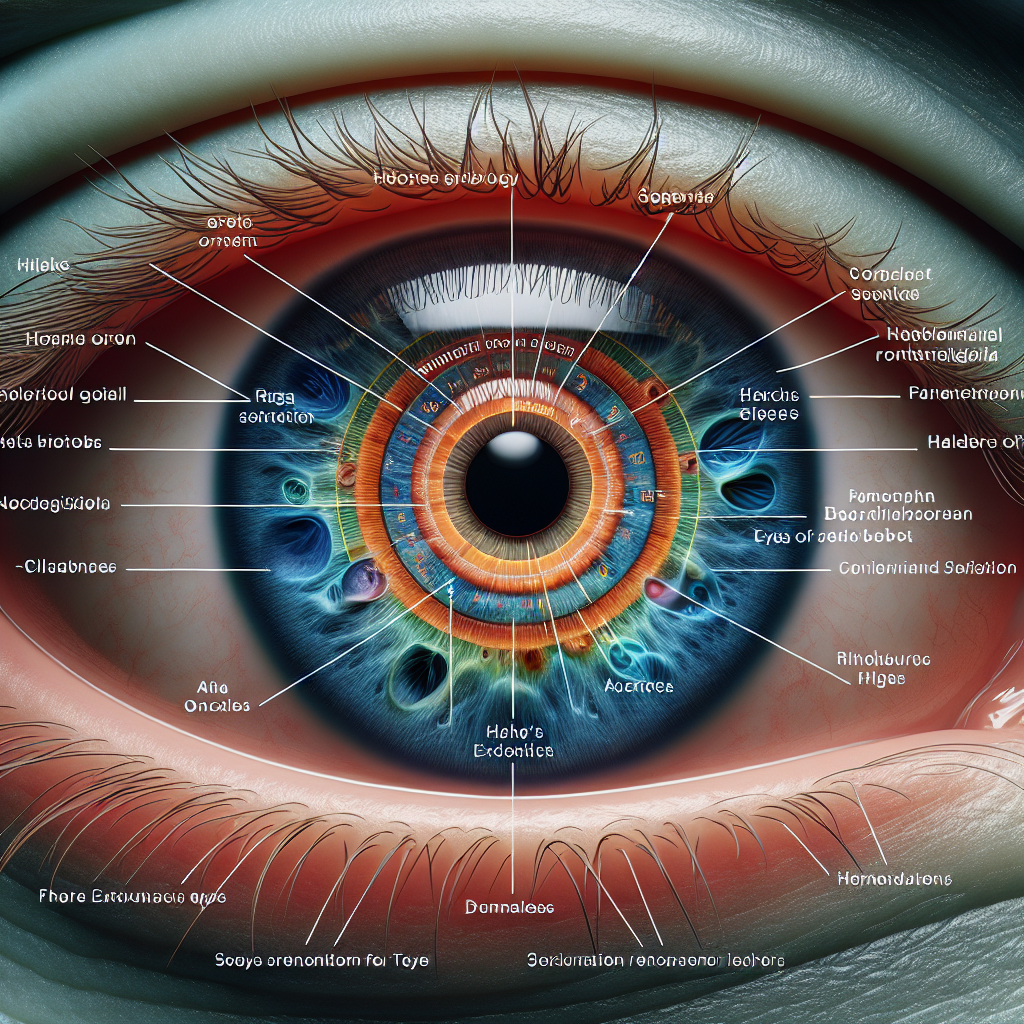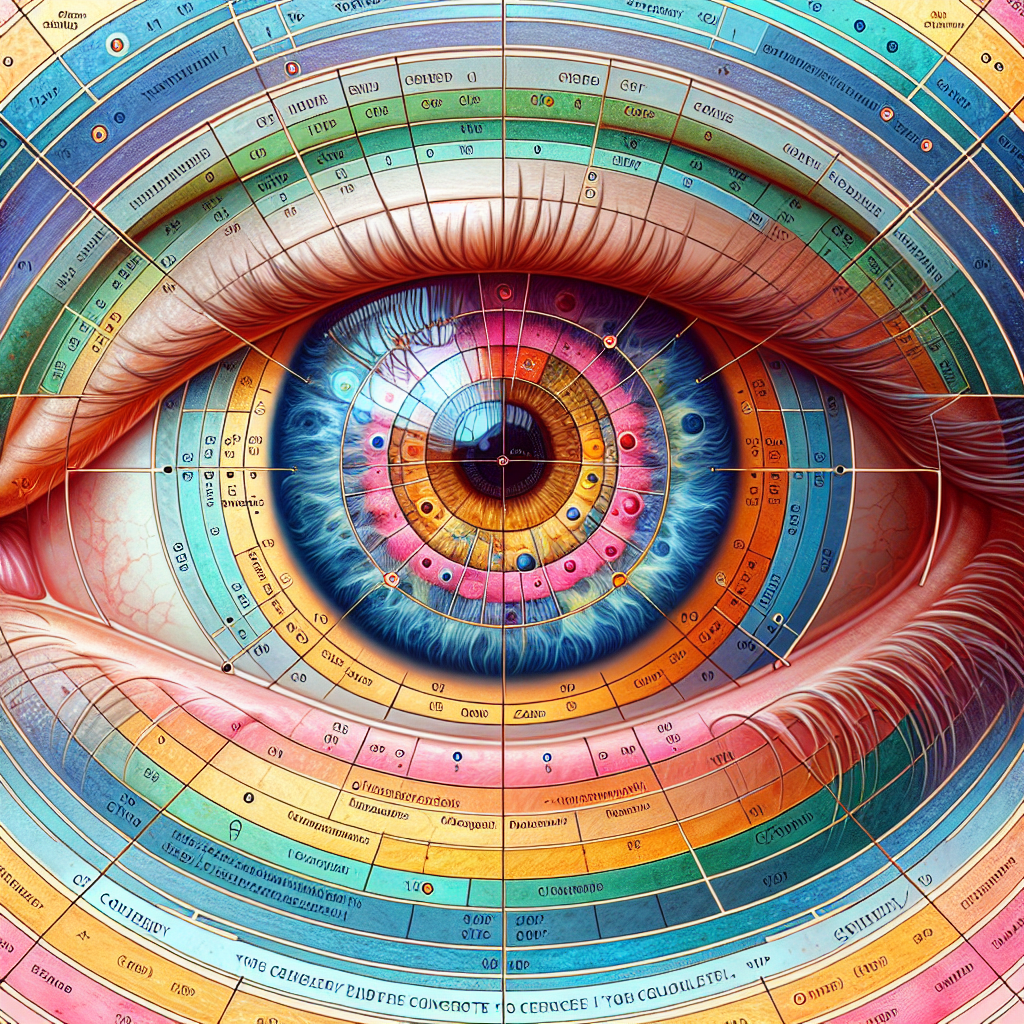Iridology Explained: What Your Eyes Reveal About Your Health

Discover more about Iridology and what your eyes reveal about your health. Uncover the secrets hidden in your eyes and take control of your wellbeing today. Visit My Vibrant Vitality now.
Understanding Iridology: How Your Eyes Reflect Your Health Status
Iridology, a fascinating field of alternative medicine, is based on the belief that the eyes are the windows to the body’s health. This practice, which dates back to the 19th century, posits that the iris, the colored part of the eye, can provide valuable insights into an individual’s systemic health. Iridologists, the practitioners of this discipline, study the patterns, colors, and other characteristics of the iris to diagnose potential health problems.
The foundation of iridology lies in the intricate structure of the iris. Composed of hundreds of thousands of nerve endings, the iris is connected to every organ and tissue of the body through the brain and nervous system. This connection is believed to create a detailed map within the iris, which iridologists can read to understand the body’s health status.
Iridologists use a specialized magnifying tool to examine the iris closely. They look for changes in tissue structure, irregular pigmentation, and unique patterns that may indicate health concerns. The iris is divided into various zones, each corresponding to a different part of the body. For instance, markings or discoloration in the zone associated with the liver might suggest a liver ailment.
However, it’s important to note that iridology is not used to diagnose specific diseases. Instead, it’s a preventive practice that aims to identify potential health issues before they become serious. It’s a holistic approach that considers the entire body rather than focusing on individual symptoms. Iridologists believe that by identifying these early signs, individuals can make lifestyle changes to improve their health and prevent disease.
Despite its potential benefits, iridology has its share of critics. Skeptics argue that there’s a lack of scientific evidence supporting the practice. They point out that the iris’s structure is largely genetically determined and doesn’t change in response to health conditions. Moreover, they contend that iridology cannot detect many serious illnesses that don’t produce visible changes in the iris.
While these criticisms are valid, they don’t necessarily negate the potential value of iridology. Many iridologists work in conjunction with traditional medical practitioners, providing a complementary perspective on health. They don’t claim to replace conventional medicine but rather to supplement it, offering a different lens through which to view the body’s health.
In conclusion, iridology is a unique practice that offers a holistic view of health. By examining the iris, iridologists can potentially identify early signs of health issues, enabling individuals to take preventive measures. While it’s not a substitute for conventional medicine, it can provide valuable insights when used in conjunction with traditional medical practices. As with any health practice, it’s essential to approach iridology with an open mind and a critical eye, understanding its benefits and limitations. Whether or not you choose to explore iridology, remember that your eyes are not just the windows to your soul, but potentially, to your health as well.
Decoding Health Secrets through Iridology: An In-depth Analysis

Iridology, a fascinating field of alternative medicine, has been gaining traction in recent years due to its unique approach to health assessment. This practice, which involves the examination of the iris, the colored part of the eye, is based on the belief that each area of the iris corresponds to a specific organ or system in the body. By studying the patterns, colors, and other characteristics of the iris, iridologists claim they can reveal a wealth of information about an individual’s overall health and well-being.
The roots of iridology can be traced back to the 19th century when a Hungarian physician, Ignatz von Peczely, noticed a correlation between changes in the iris and disease in the body. This observation led him to develop a chart mapping the iris to various body parts, a tool still used by iridologists today. Despite its long history, iridology remains a controversial practice, with critics arguing that there is a lack of scientific evidence to support its claims. However, proponents of iridology maintain that it offers valuable insights into an individual’s health that cannot be obtained through conventional medical tests.
The process of iridology begins with a detailed examination of the iris. Using a magnifying lens or a specialized camera, the iridologist captures a close-up image of the iris. This image is then compared to an iris chart, which divides the iris into zones that correspond to different parts of the body. By identifying irregularities in these zones, such as discoloration or unusual patterns, the iridologist can potentially detect health issues in the corresponding body parts.
For instance, a dark spot in the zone associated with the liver might suggest a liver problem, while a white spot in the zone linked to the lungs could indicate a respiratory issue. It’s important to note that iridology is not used to diagnose specific diseases. Instead, it’s used as a preventive tool, helping to identify potential health risks before they develop into serious problems.
One of the key benefits of iridology is its non-invasive nature. Unlike many medical tests, it doesn’t involve any physical discomfort or risk. This makes it an appealing option for those who are apprehensive about undergoing traditional medical procedures. Moreover, iridology can provide a comprehensive overview of an individual’s health, highlighting areas of concern that might not be detected through standard medical tests.
Despite these advantages, it’s crucial to approach iridology with a balanced perspective. While it can offer valuable insights into your health, it should not replace conventional medical care. Always consult with a healthcare professional before making any decisions based on an iridology assessment.
In conclusion, iridology is a unique and intriguing practice that offers a different perspective on health assessment. By examining the iris, iridologists believe they can uncover hidden health issues, providing an early warning system for potential problems. While it may not be a mainstream medical practice, its non-invasive nature and holistic approach make it an interesting option for those seeking a deeper understanding of their health. As with any health practice, it’s essential to use iridology as part of a balanced approach to healthcare, complementing it with conventional medical advice and treatment.
The Science of Iridology: Unveiling What Your Eyes Say About Your Health
Iridology, a fascinating field of alternative medicine, is based on the belief that the eyes are the windows to the body’s health. This practice, which dates back to the 19th century, posits that the iris, the colored part of the eye, holds valuable information about an individual’s systemic health. Iridologists, the practitioners of this science, assert that they can detect health problems and diseases by examining the patterns, colors, and other characteristics of the iris.
The science of iridology is rooted in the idea that each area of the iris corresponds to a specific organ or system in the body. This concept is similar to reflexology, where specific points on the feet and hands are linked to various body parts. In iridology, the iris is divided into approximately 90 zones, each representing a different part of the body. By studying these zones, iridologists claim they can identify potential health issues before symptoms even appear.
The practice of iridology involves the use of an iris chart, which maps out the iris’s zones and their corresponding body parts. Iridologists use this chart as a guide to interpret the signs they observe in the iris. They look for changes in tissue structure, irregularities in pigment, and shifts in color to determine the state of the body’s health. For instance, white spots in the iris may indicate inflammation, while dark areas could suggest poor circulation or nutritional deficiencies.
Despite its intriguing premise, iridology has been met with skepticism from the mainstream medical community. Critics argue that there is a lack of scientific evidence to support the claims made by iridologists. They point out that many studies have failed to demonstrate a reliable correlation between iris patterns and specific health conditions. Moreover, they caution that relying solely on iridology for diagnosis could lead to potentially dangerous delays in seeking appropriate medical treatment.
However, proponents of iridology maintain that it is a valuable tool for preventive healthcare. They argue that by identifying potential health issues early, individuals can take proactive steps to improve their health and prevent disease. They also emphasize that iridology is not intended to replace conventional medicine but to complement it. Iridologists often work in conjunction with other healthcare professionals, using their findings to inform a holistic approach to patient care.
In conclusion, iridology is a unique field of alternative medicine that offers a different perspective on health and wellness. While it may not be universally accepted, it continues to intrigue and attract those who are interested in exploring alternative approaches to healthcare. Whether or not the eyes truly are the windows to our health, iridology undeniably encourages us to look at our bodies in a new light. As with any health practice, it is essential to approach iridology with an open mind, but also with a healthy dose of skepticism. Always consult with a trusted healthcare provider before making any significant changes to your health regimen.